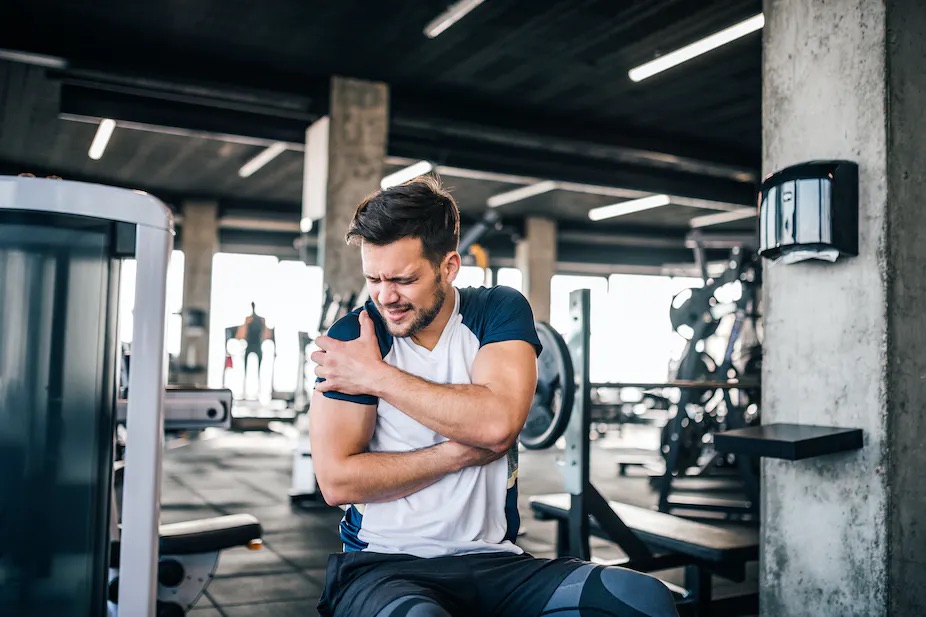In this post we discuss what to do if your rehab exercises are causing you pain.

There are few things more frustrating to me than hearing people explain they’ve been using a particular exercise for months, but they think it’s making them worse.
When they tell their physio they’re sometimes advised to persevere.
That when they get stronger the pain will subside.
And that pain isn’t a problem and part of the healing process.
Some even begin to doubt their own experience, is it the exercise or something else?
Firstly if you think an exercise is making you worse, it probably is.
In fact I’d go as far as saying if an exercise isn’t helping you feel better, something isn’t right.
There are some circumstances when a certain amount of pain following exercise is acceptable. Tendon rehabilitation is a good example. For most muscle and joint issues however, if an exercise causes you pain, it should be adapted because it might impact your results.
In this study for example, subjects with back pain who were asked to perform an exercise that caused them pain, faired worse than those who used an exercise that made them feel better.
Sounds obvious doesn’t it? But yet it’s worth emphasising.
At the same time it’s important to note that pain doesn’t necessarily mean the exercise is causing damage. This is especially true in chronic issues that have been evident for several months.
It’s more that it might slow down your recovery.
Oh and yes, it’s unpleasant.
Pain is a safety feature
Think of pain like a speed limiter on a car. You want to drive at 70mph but the limit is currently set at 55mph. That’s the speed your central nervous system (CNS) thinks is safe.
Any faster and the response will be pain to slow you down.
Your job is to provide compelling evidence that 70mph is safe.
How do you do that?
One useful tool is resistance training.
Now of course you’ve been doing precisely that but you feel worse so what gives?
Your exercises are most likely above the 55mph limit.
In many cases people are trying to convince their central nervous system everything is fine whilst doing 100mph up the backside of the car in front.
It won’t work.
The solution is to find a starting point just under your present limit and slowly build from there.
How to make an exercise pain free
Consider the following to reduce or eliminate any pain you might feel during an exercise.
Limit range of motion
Let’s say bending your knee to 90 degrees in a particular exercise causes you pain. Can you bend it to 80 degrees without issues? Good. Start there.
Lower the resistance
This seems obvious but can be difficult to do if the weight you’re using is that of your own body. It may be better to use resistance training machines where you can easily control the resistance you’re working with.
Reduce the moment arm
The weight you’re using is only half of the picture. The other half is the distance that weight is from the joint it’s challenging.
For example, holding a weight out in front of you with a straight arm requires more effort than holding it by your side. This is because it’s further from your shoulder joint.
Larger moment arms not only increase the challenge to the muscles but also influence the forces at your joints. Reducing the moment arm in an exercise can make it more joint and muscle friendly.
Reduce the complexity of the exercise
A common exercise for knee pain is a single leg squat. This requires you to balance on one leg whilst bending at the knee and hip and standing back up again.
It’s a complex exercise involving several joints and a balance component thrown in for good measure.
Many people without joint or muscle issues will struggle to perform this exercise well.
It’s more effective to isolate the muscles that move the knee if that’s the focus and strengthen them in an isolated way.
Slow down and pay attention
Do you perform your exercises whilst watching TV or arguing with your partner? This isn’t best practice.
You need to focus on what you’re doing and how you’re doing it.
Think about the muscles you should be using and be very deliberate about how you perform the exercise.
Slow down as you reach either end of the repetition in particular. Many of the sensors that feed information back to your CNS reside in and around the structures of your joints. You don’t want to go slamming into them.
Remember you’re trying to convince your CNS that everything is under control and there’s no need for alarm.
Limit frequency and volume
Sometimes it’s not just the exercises that are the problem, but also the sheer number and how frequently they’re being performed.
If you find yourself having to complete 20 plus repetitions of an ever growing list of exercises that leave you with no time to do anything else, I’m talking to you.
If an exercise is done right, it shouldn’t need to be performed more than twice a week.
Summary
If your rehab exercises are causing you pain, don’t persevere unless you have very reliable information this is the right thing to do.
In many cases it’s the exercises that are the problem. These should be adapted to reduce unpleasant sensations.